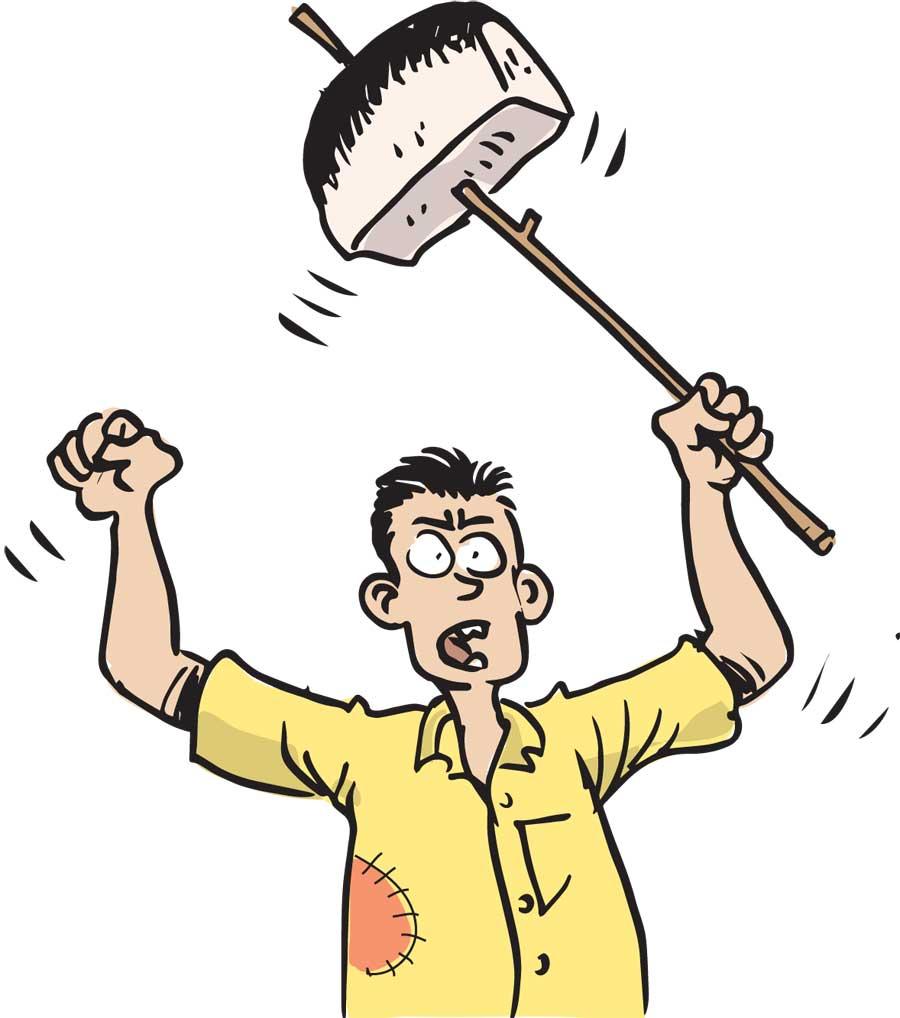09 Feb 2024 - {{hitsCtrl.values.hits}}

The study of the history of bread in Sri Lanka provides us with an interesting story. Despite Sri Lankan homes trying to dissuade eating bread - stating that such foods invite disease early in life - the baked meal made of flour has held on to its place on the dining table despite fighting for survival amidst government regulations imposed on bakery and restaurant owners.
The present regulation is that a loaf of bread must weigh a minimum of 450 grams. This was made mandatory following a government regulation confirmed through gazette notification recently. However, bakery owners are complaining that there must be a price control now because an unofficial price revision has taken place to balance costs with the increase in the weight of a loaf of bread.
The government and bakery owners ought to be aware that people with authority mustn’t play with the people’s habit to consume bread. This meal is preferred by both rich men and the less affluent, hence increasing the price of bread or reducing the weight of bread from a solely business point of view might produce drastic repercussions. There have been occasions in the past when bakery owners have tried to reduce the price of bread to Rs 100 (in the year 2023) to recover lost demands for bread. We also remember when the price of electricity was jacked up by 66% in 2023, bakery owners still refused to increase bread prices, fearing there would be a drop in sales. That’s how sensitive the market is connected to bread.
The official price of a loaf of bread is Rs 150. There is speculation that bakery owners are mulling over the thought whether the price of bread should be increased to Rs 160 for the industry to enjoy profits and sustain itself. The common knowledge is that restaurant owners make a profit of Rs 10 from a loaf of bread. What is a matter for concern is whether the bread eating consumer will be forced to move away from eating bread; a habit which the Portuguese introduced to islanders in the 16th Century.
The culture of eating bread is deep rooted in the Sri Lanka society; especially among the Sinhalese. Bread and dhal in the morning is not only a staple breakfast, it is much looked forward to if the bread is fresh out of the oven and steaming. It is not an exaggeration when existing research reveals that bread is preferred over rice in some houses in this island nation.
From roast bread, thati paan (a kind of compressed bread), bread baked in a logwood store and the atchchu paan (the normal baked bread), bread comes in indifferent shapes, textures and tastes. When it comes to eating bread Sri Lankans are spoilt for choice.
Bread is also taken to protest sites. There have been occasions when protesters stick bread on a stick and agitate when the cost of living is subject to an increase, thanks to governments who know nothing about empathy. Bread can be used as a symbol which denotes that a society is well-fed.
Critics believe that the price of bread cannot be increased any further. This is because raising bread prices could have a trickle-down effect on the whole community. From children’s tiffin boxes packed with sandwiches for breakfast to the half a loaf of bread and a potion of dhal for the working adult or labourer, the loaf of bread has come to stay on the Sri Lankan dining table. Lawmakers must handle the price issue with regard to bread with much care; akin to baking the much loved loaf of bread inside an oven.
27 Jul 2024 1 hours ago
27 Jul 2024 4 hours ago
27 Jul 2024 6 hours ago
27 Jul 2024 6 hours ago
27 Jul 2024 6 hours ago